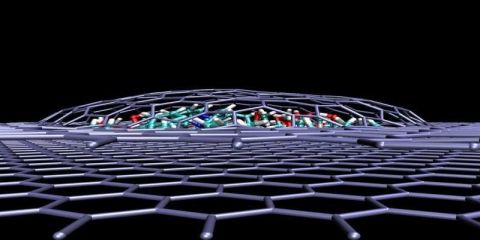Now even surgery doctors are replaced by robots
Robot Performs Soft-Tissue Surgery By Itself
Doctor Robot, you're a new and better man.
With a bulky camera eye and spindly hydraulic arm, this medical robot looks like it could fit in on an automotive production line. This bot isn't building a Toyota, though. It carefully scans soft, sticky intestinal tissue and delicately weaves stitches with unmatched surgical precision. Indeed, with no guiding hand from its fellow doctors, it is the best in the world at performing the medical operation it was designed for. It is performing surgery all by itself.
The surgical bot is named STAR, or Smart Tissue Autonomous Robot, and it just performed the world's first autonomous, soft-tissue surgery. STAR is the creation of a team of computer scientists and medical researchers led by Peter Kim, a biochemist at the Children's National Health System in Washington D.C. The machine performed several supervised (but unguided) surgical procedures in which it sutured together two severed segments of bowel intestine in living, anesthetized pigs.
The operation is called intestinal anastomosis, which is used after a bowel segment needs to be removed. Not only did the pigs survive the successful operations, but STAR was found to have far outperformed manual open surgery, larposcopy surgery, and the next best robotic assisted surgery. The robot's surgical finesse is overviewed today in the journal Science Translational Medicine.
"Current robotic surgery is 'teleoperated', [meaning that] every step and every movement of the robot, is directed by the surgeon," says Axel Krieger, a robotics expert with the team at Children's National Health System. "Our innovation is really to make this more autonomous, so that you don't have to direct every motion."
To oversimplify this operation, you can think of intestinal anastomosis like sewing together two sticky tubes. A human surgeon—performing open surgery with just a needle in hand—is almost three times as fast as STAR. But by almost all other measures the robot outperformed its organic counterparts. STAR excelled in the consistent spacing of its sutures, creating taught, leak-proof joints and avoiding mistakes when removing its needle from the tissue. Whether they performed open, laproscopic, or even robot-assisted surgery, the humans couldn't match the machine.
"The outcomes were surprising to us—that consistency throughout the performance was better than [human] surgeons," says Kim.
To be fair, humans still played assistant to STAR during the surgeries, performing tasks like making sure the suture thread didn't get tangled as it was pulled tight. But STAR followed its own operation algorithm, picking where and when to poke its needle. And the researchers aren't too worried about the speed issue, either. "We can run the robot really, really fast. But in this study, we really focused on the outcomes, so we didn't run it as fast as we could," says Krieger.
"Consistency throughout the performance was better than [human] surgeons."
STAR owes its skill to more than just to its nimble suturing tool—which is articulated with 7 degrees of freedom—and the mechanical precision of its programming. The heart of STAR's performance is an interesting breakthrough in robotic imaging technology. The robot's mechanical eye takes images in near-infrared fluorescent light, "similar to a night vision technology that military uses", says Kim. This guides the robot through a confusing, shifting mire of gelatinous soft tissue, which can sometimes look indiscernible to the human eye.
STAR then combines those images with a 3D tracking algorithm "which informs the robot where things are in a three-dimensional space," Kim says. "By combining these two, we are able to follow [the] soft tissue movement... with a precision that we need to carry out a surgical task."
Kim sees STAR as proof that a whole range of soft tissue surgeries could soon be handed over to autonomous robots, which (sorry, med students) would likely perform them far better than doctors. For example, other soft tissue surgeries include tumor removals and tendon repairs. "Fundamentally what we've shown here is that soft tissue surgery can be done autonomously. I expect that at some point this could be available to anybody and everybody," says Kim.


















Comments
Post a Comment